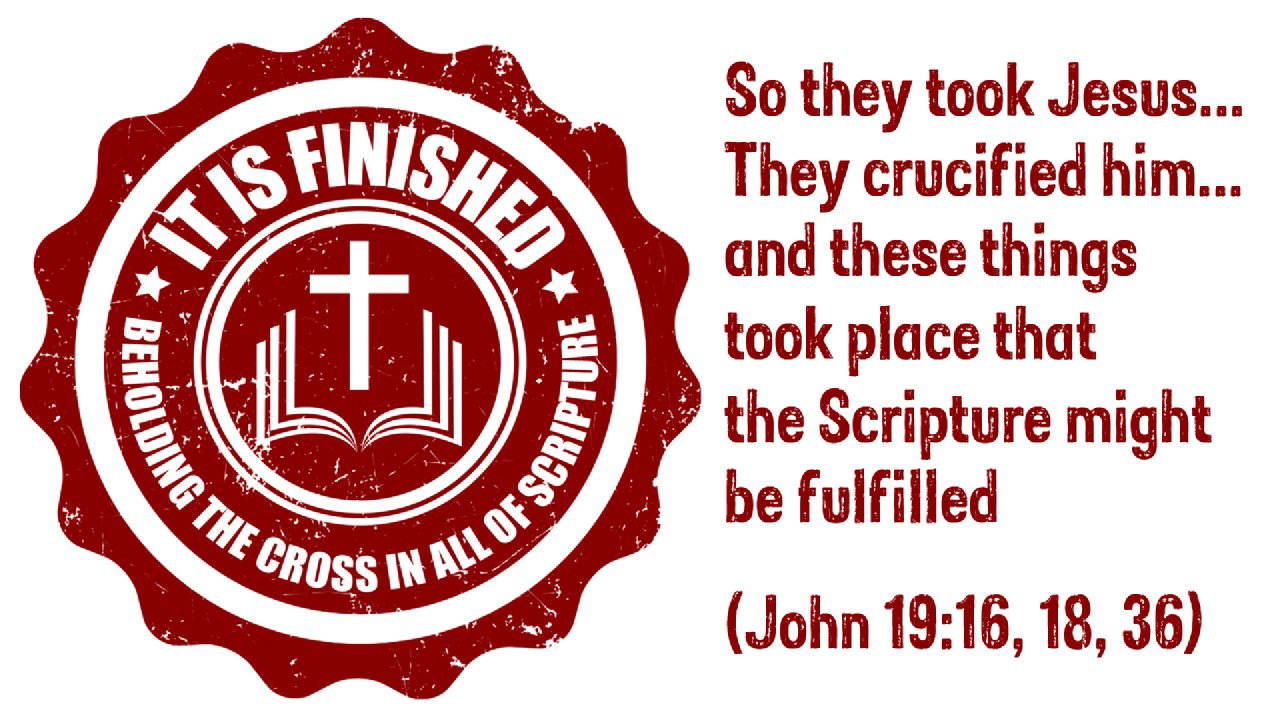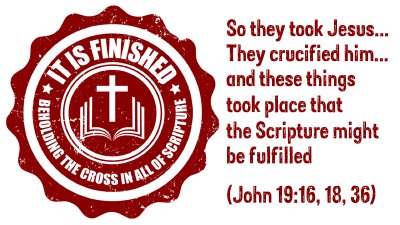In the Old Testament, there a handful of passages that are critical for understanding Christ’s cross. Over the last few weeks, we have looked at many of them (Genesis 22, Exodus 12, Leviticus 16, and Psalm 22). And there are others, that this sermon series won’t cover (e.g., Numbers 21, Zechariah 9–14, etc.) But the most important passage in the Old Testament for learning what Christ’s cross achieved is Isaiah 53 (technically, Isaiah 52:13–53:12).
In this fifteen verse, five stanza “Servant song,” we are introduced to the One who will die for the sins of his people. In particular, he offers a guilt offering in the place of those who deserve God’s penalty of death.
In recent years, the idea of Christ’s penal substitution and God pouring out his wrath on the Son has not set well with many—both those inside the church and those outside the church, as well as those leaving the church. Indeed, with an appeal to God’s universal love, many have misunderstood why Christ’s death, as a penal substitute, is good news and necessary for salvation. Others have questioned how guilt can be transferred from one person, or one group, to another.
On Sunday we will tackle these questions head on as we look at Isaiah. By paying attention to the words of Isaiah, how they fit in Isaiah’s book and the whole Bible, we will see the goodness and glory of Christ’s penal substitution.
Come join us this Sunday as we look at this crucial chapter in the Old Testament. Please read Isaiah 53 to prepare your heart. And pray that God would be glorified as Christ is lifted up.
For Christ’s Glory and your joy,
Pastor David
-------------------------------------------------------------------------------------------------------------------------------------------------------------------
Discussion & Response Questions for Isaiah 53
1. Who is the Suffering Servant in Isaiah 53? And how do we know?
2. What is the context of Isaiah 53? What comes before it? What comes after? How does context of Isaiah understand the chapter?
3. How is Isaiah 53 laid out? Why is from glory to (greater) glory a good way to organize the 5 stanzas? What stands at the center?
4. What do we learn about God’s purposes for his Servant in Isaiah 53? And what do we learn in vv. 4–6 that we could not learn by simply watching Christ’s death on the cross (or any movie depicting Christ’s death)?
5. What is penal substitution and why does it matter? What questions remain about this important doctrine?
6. Why do people object to penal substitution? How does Isaiah 53 (and other passages) answer those objections?
7. In addition to the great exchange at the center of Isaiah 53 (vv. 4–6), what parts of Isaiah 53 are picked up and applied to Christ in the New Testament?
8. What comfort or confidence in the Lord does Isaiah 53 give to you as you consider the cross of Christ?
8. The Heart of the Gospel (Isaiah 53)
Penal Substitutionary Atonement
October 31, 2021 • David Schrock • Isaiah 53
13. The Supremacy of Christ and His New Covenant (Hebrews 9)
December 5, 2021 • David Schrock • Hebrews 9
As we come to the last message of our series on the cross, before considering the cradle and the cross of Christ (our Advent mini-series) we will return to the theme that we started with—the finished work of Christ. If Christ declared that it was finished on the cross (John 19:30). And his crucifixion completed the work described in Psalm 22 (see v. 31). Then Hebrews 9 gives us another passage where the once and for all work of Christ is extolled and explained. In fact, in describing the ways that Christ is better than all the persons, events, and institutions that preceded him in Israel, Hebrews 9 explains how the cross works—both on earth and in heaven. As you have time, read Hebrews 9 and pray that God would open our eyes to see all the ways that Christ fulfills all the types and shadows of the Old Testament. Indeed, all of the Law, the Prophets, and the Writings point to Christ, and this Sunday, Lord willing, we will see how that works once and for all. For His Glory and your joy, Pastor David ------------------------------------------------------------------------------------------------------------ Discussion & Response Questions for Hebrews 9 1. What are the key components of the Levitical system of sacrifice? (Hint: there are four) 2. What do you know about each—the tabernacle, the priesthood, the sacrifices, and the covenant? 3. Why is it necessary to know these components of the sacrificial system, if you want to know the finished work of Christ? 4. How does Christ’s cross (and resurrection and ascension) fulfill the sacrificial system? 5. In what ways does Hebrews 9 depend upon and quote the Old Testament to explain Christ’s death and resurrection? 6. How is Christ better? Why is this good news for the Jewish followers of Christ? How is this good news for us? 7. What does it mean that Christ is the mediator of a new covenant? 8. What did the blood of Christ accomplish? Remember, the blood applies in two directions in Hebrews 9. 9. How does Christ purify heaven? How do we see that in the text? 10. How does the inauguration of the new covenant and the exaltation of Christ into heaven change the world? And impact your life?
12. The Cross of Christ Demonstrates, Defines, and Diffuses the Love of God (1 John 4:7-12)
November 28, 2021 • David Schrock • 1 John 4:7–12
Where do you look when you don’t feel the love of God? This Sunday we will look to 1 John 4 to answer that question. And what we will find is that the unchanging and objective work of God also has a personal and subjective application to all those who are in Christ. Indeed, the cross not only does something for us, it does something to us. And this Sunday we will see what that is. To prepare for Sunday, take time to read 1 John. While our focus will be on 1 John 4:7–12, the whole book is aimed to give assurance to God’s people, all the while exposing unbelief. So take time to read and pray for our gathering. I look forward to seeing you Sunday, as the Lord allows, and to worshipping Christ with you. For His Glory and your joy, Pastor David --------------------------------------------------------------------------------------------------------------------------------------------- Discussion & Response Questions for 1 John 4 1. What have you learned so far this fall about the cross? 2. Why is it important to first see the cross as something Christ achieved (“It is finished”) before seeing it as something where God displays his love? 3. What does John say about love in 1 John 4? 4. In what ways is it difficult to know or embrace God’s love? 5. What does the cross teach us about God’s love? And how does it produce love in us? 6. How does the church, who is dedicated to the cross, show the love of God? 7. What else did you learn about the love of God? 8. Who needs to hear from you about the love of God?
11. Reconciliation (Colossians 1:15-2:15)
November 21, 2021 • David Schrock • Colossians 1:15—2:15
Since the start of our series on the cross, one recurring theme we have seen is the way that judgment and salvation are paired. In the Passover, God saved his firstborn and judged Egypt’s firstborns. At the Red Sea, God saved his people and destroyed Pharaoh and his army. Just the same, as I read 2 Kings 3 this week, I found this theme again. The water that God provided to save Israel is the same water that brought the Moabites to their death. In short, God’s judgment is never without salvation. And his salvation is never without judgment. From the flood of Noah to the end of time, we find salvation and judgment. And this week, we will see how Paul joins these two works of God in the cross of Christ. In Colossians 1:20, Paul says that the blood of Christ’s cross is reconciling all of creation. And in what follows (1:21–2:23) he explains how that happens – through salvation and judgment. In these two chapters Paul identifies whom the cross saves and whom the cross judges. And for us, as we keep our eyes fixed on Christ, we will see how the cross has cosmic, as well as personal implications. To prepare for Sunday, take time to read Colossians—it’s not long. On Sunday, we will start with Colossians 1:20 and then follow Paul’s twofold explanation of Christ’s cosmic reconciliation that relates to salvation and judgment. I can’t wait to see you Sunday, as the Lord allows, and to worship the risen Christ with you. For His Glory and your joy, Pastor David --------------------------------------------------------------------------------------------------------------------------------------------- Discussion & Response Questions for Colossians 1-2 1. How has the pattern of salvation and judgment been seen in the Bible? And how has that pattern helped you better understand the cross? 2. In what ways does Paul speak of the cross in Colossians? And how do the creation themes relate to the cross? 3. Look at Colossians 1:20. What does this verse not mean? (Hint: No universal salvation) And how do make sense of what it does mean? (Hint: keep reading the letter) 4. Paul uses the word “reconciliation” in Colossians 1:20 and 1:22. This is the same word, but is it used in the same way? If not, why not? How do we know? 5. According to Colossians 1–2, how does Christ reconcile the cosmos? Why does this matter? 6. What does the cross do for God’s elect (Col. 3:9)? Where do we see that in the text? (Hint: 1:21–23; 2:11–14) 7. What does the cross do for God’s enemies? Where do we see that in the text? (Hint: 2:15) 8. What does penal substitution mean? What does Christus Victor mean? How do they relate? And how do they resonate with the storyline of salvation and judgment? 9. How do we apply these two aspects of the cross? Look at 1:24–2:8 and 2:16–23. 10. What else do you see in Colossians 1–2?




